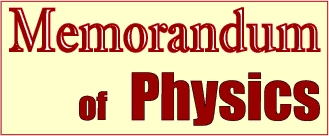Motion and Point mass
Motion
The movement of the object is called a motion.
The motion of the object changes if force acts on the object.
It is mechanics to discuss force with the relation of the change in the motion as the result.
The motion of the object can be interpreted by mechanics in an orderly sequence.
In the kind of the motion that is basic, there are the following three.
| motion | Image | Field of corresponding mechanics |
| Translation |  | Mechanics of point mass |
| Gyration |  | Mechanics of rigid body |
| Transformation |  | Materials science |
For instance, let's think about the motion of the earth.
The earth spins on its axis. And, it revolves at the same time around surroundings in the sun.
Rotation is a gyration, and the revolution is a translation.
The earth does a mountain building and a continental movement at the same time. These are the transformation motion.
Thus, the movement of the object works out by combining the movements that are three bases.
And, basic movement of three is mutually independent.
For instance, translation is unaffected from the gyration and the transformation.
It is necessary to consider the size of the object to discuss the gyration and the transformation.
On the other hand, translation is irrelevant to the size of the object.
This is the main feature of translation.
When thinking about translation, the size of the object can be excluded.
In a word, you may consider the object as "There is no size though there is mass".
This is called point mass.
<<PREVIOUS---NEXT>>
